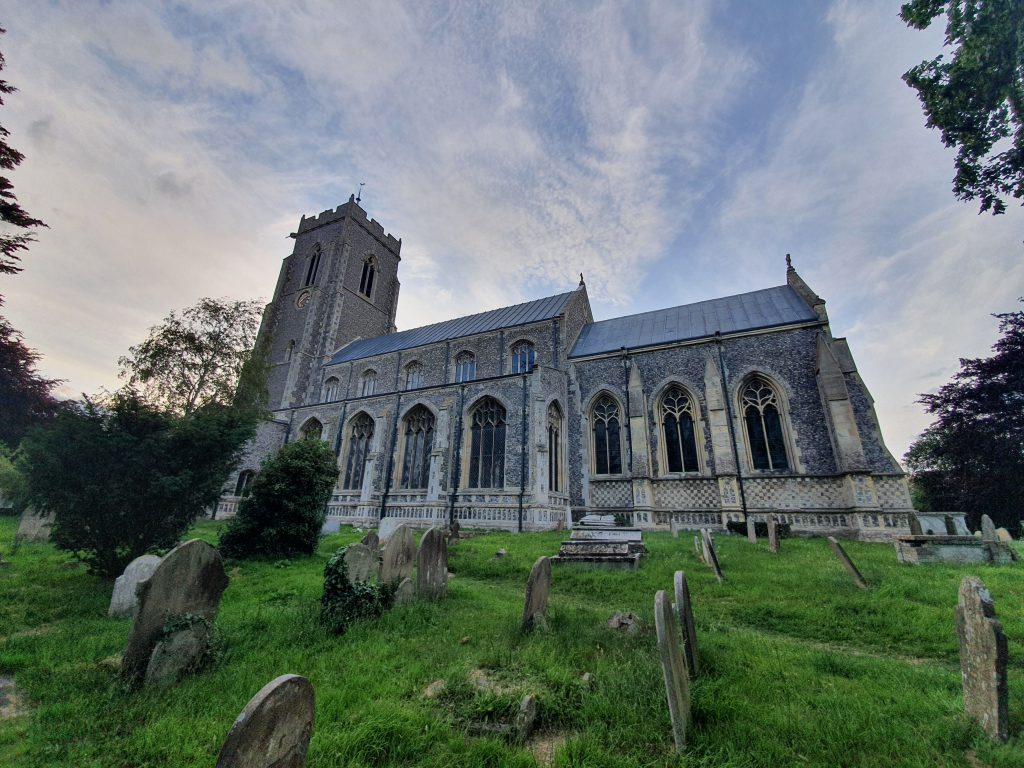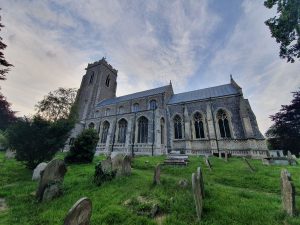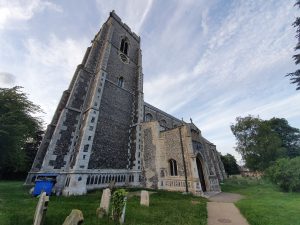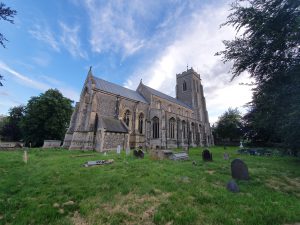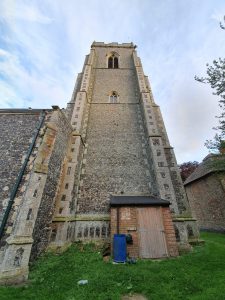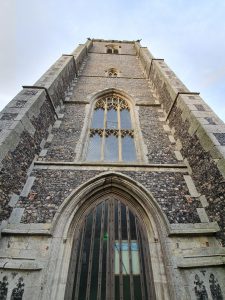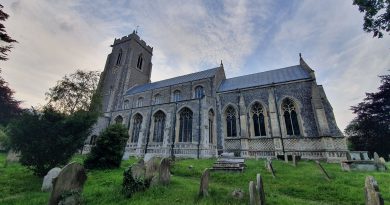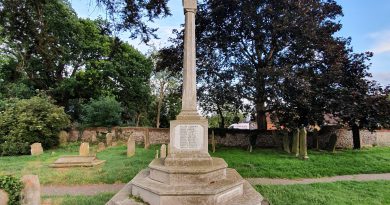Martham – St. Mary’s Church
There was probably a church on this site in late Saxon times and a recent archaeological dig discovered the foundations of a round tower from the twelfth century. What stands today though is primarily from the late fourteenth and early fifteenth centuries.
I must admit to being a little unimpressed with the printed ‘NO ENTRY’ paper signs that the church has placed on the locked porch doors. For those who had hoped to see when the church might be once again open for prayer, they weren’t informative nor did they offer any guidance to parishioners. Given that their web-site is telling people that the rector is once again available daily in the church, it all felt a bit unwelcoming.
Known as “the Cathedral of the Fleggs” as it’s the grandest church in the area, the tower stands over 100 feet in height. The church’s original chancel was completed between 1456 and 1469 by Robert Everard, who also designed the spire of Norwich Cathedral. I would have liked to have seen this, but as it was falling down by the nineteenth century, it was replaced with an entirely new chancel between 1855 and 1861 which was designed by Phillip Boyce. Pevsner was impressed by the quality of the workmanship completed by Boyce, so that’s good enough for me…..
It’s a slight shame that this red-brick building is stuck here under the tower.
The tower itself has four stages and the floor was lowered in 1999, which must have been an interesting project and a chance to see the hidden history of the building.
There’s an interesting article from 1858 about the restoration of the church, which gives a perspective of why the modernisation of the building was seen as important.
“Martham church was once, many generations ago, a fine, indeed an extraordinary structure even amongst the many noble village churches of Norfolk, but the hand of time, and the still heavier hand of man, did much to impair its beauty, and to render nugatory that which art and taste had constructed. Massive, ill-contrived boxes, gradually usurped the place of seats, simple and light in appearance, and many exquisite productions of art, treasures in tracery, and beautiful specimens of carving, were ruthlessly buried amidst rubbish or covered over with the ‘improvements’ of some modern Goth, and lost, too many of them, for ever.
Old seats were swept away, and cumbersome and heavy galleries soon disappeared. It was found that the original seats had been built over and upon and fine old relics in carving and tracery were recovered, and no less than fifty ancient and beautiful poppy heads were taken from their hiding places and set in their proper positions.”
Much as I like seeing box pews, which can add much character and some depth to a church, the argument to remove them is also strong. Some of the poppy heads which had been damaged were altered during their repair process and they’re all still visible in the church today.
This is another church that I’ll have to come back to in order to see the interior….

